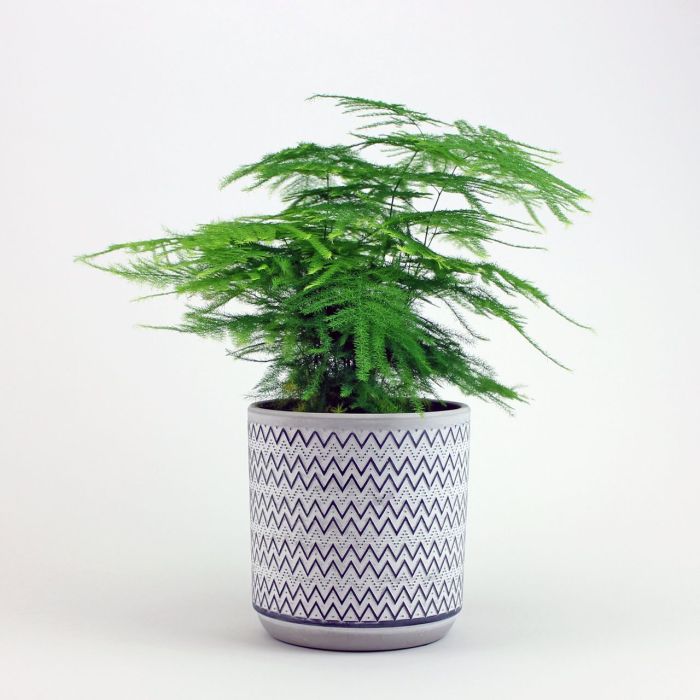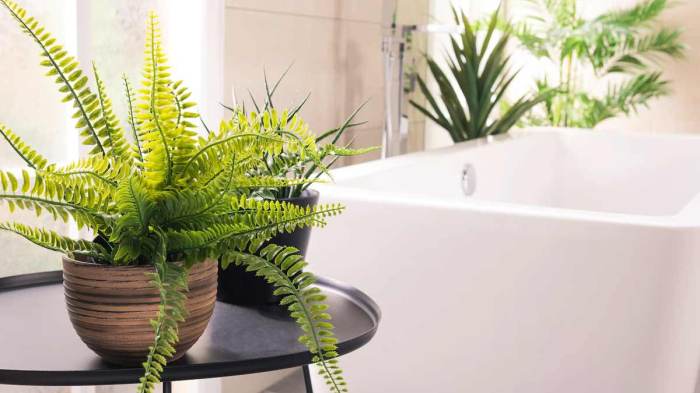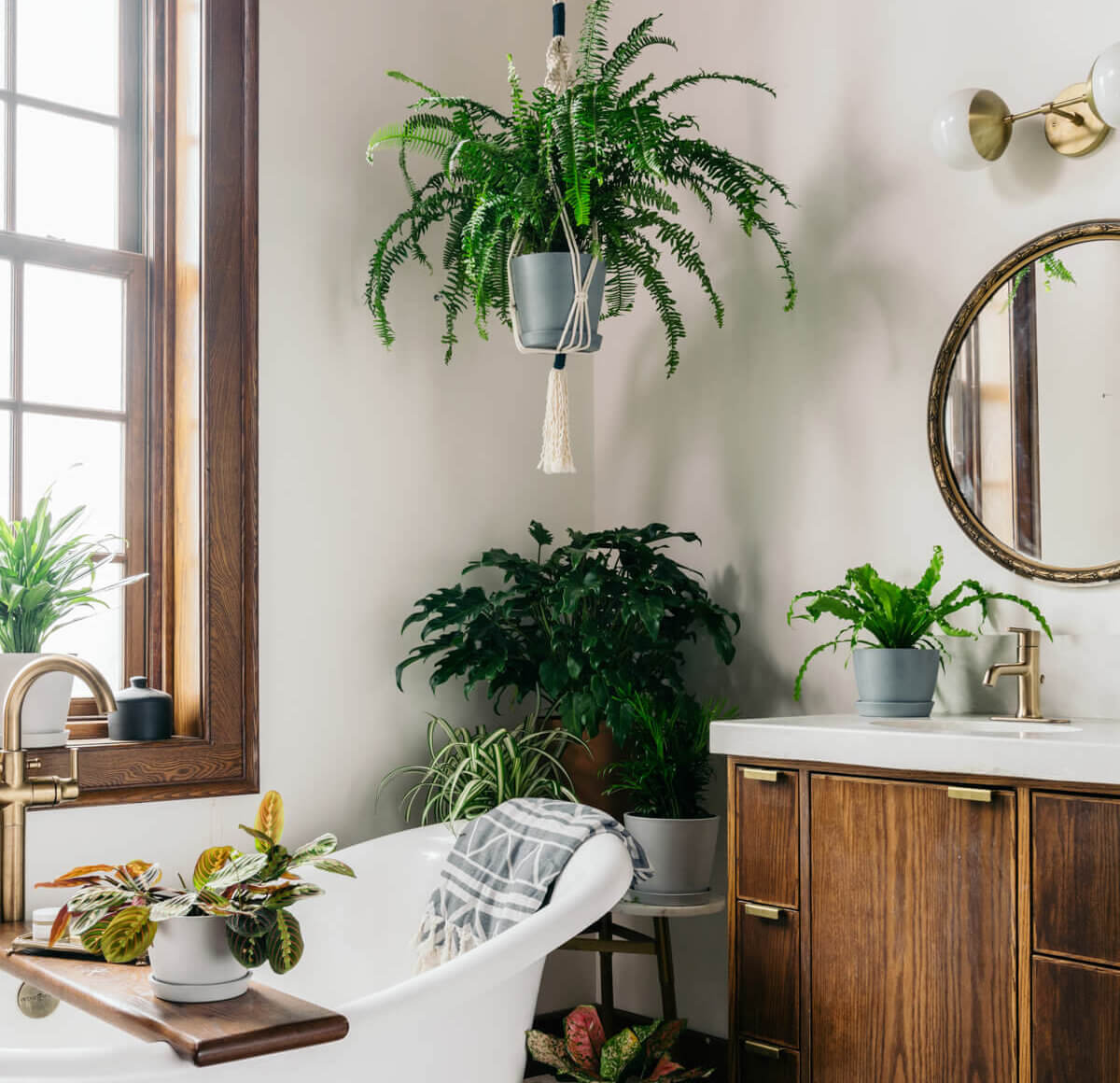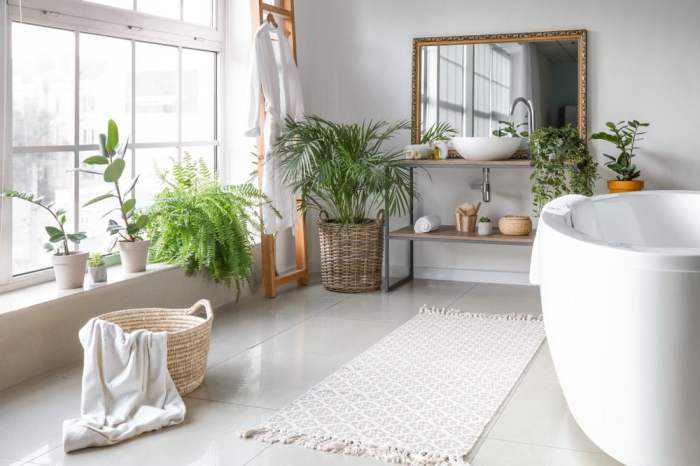When it comes to creating a spa-like ambiance in your humid bathroom, incorporating the best plants for humid bathrooms is key. These botanical wonders not only add a touch of nature’s beauty but also provide numerous benefits, including purifying the air, reducing humidity levels, and enhancing the overall aesthetic.
From the lush greenery of ferns to the delicate blooms of orchids, discover the ideal plants that thrive in the humid environment of your bathroom, creating a sanctuary of tranquility and well-being.
Benefits of Plants in Humid Bathrooms
Incorporating plants into humid bathrooms offers numerous advantages, transforming them into healthier, more aesthetically pleasing spaces.
Firstly, plants act as natural air purifiers, removing harmful toxins and pollutants from the air. This is particularly beneficial in bathrooms, where moisture and poor ventilation can lead to the accumulation of mold and mildew.
Reduce Humidity Levels
Plants also play a crucial role in regulating humidity levels. By absorbing moisture through their leaves, they help reduce excess humidity, creating a more comfortable and healthier environment.
Add a Touch of Nature and Beauty
In addition to their practical benefits, plants bring a touch of nature and beauty to bathrooms. Their lush greenery and vibrant colors can instantly transform a sterile space into a serene oasis.
Best Plants for High Humidity

The humid environment of bathrooms provides an ideal habitat for certain plant species that thrive in high moisture levels. These plants not only enhance the aesthetics of your bathroom but also contribute to improved air quality and overall well-being.
Ferns
Ferns are renowned for their adaptability to humid environments. Their fronds, or leaves, have evolved to absorb moisture directly from the air, making them ideal for bathrooms with limited natural light. Some popular fern species that excel in humid conditions include:
- Boston fern ( Nephrolepis exaltata): Known for its long, arching fronds that create a lush, cascading effect.
- Maidenhair fern ( Adiantum capillus-veneris): Delicate and graceful, with fan-shaped fronds that add a touch of elegance to any bathroom.
- Asparagus fern ( Asparagus setaceus): A unique fern with feathery, needle-like foliage that adds a touch of texture and height.
Orchids
Orchids are another group of plants that thrive in humid environments. Their exotic blooms and intricate foliage make them a stunning addition to any bathroom. Some orchid species that are particularly well-suited for high humidity include:
- Moth orchid ( Phalaenopsis): A popular and easy-to-care-for orchid with large, showy flowers that come in a variety of colors.
- Lady slipper orchid ( Paphiopedilum): A unique orchid with pouch-shaped flowers that add a touch of whimsy to any bathroom.
- Dendrobium orchid ( Dendrobium): A diverse genus of orchids with a wide range of flower shapes and sizes, making them a versatile choice for any bathroom.
Peace Lilies
Peace lilies ( Spathiphyllum wallisii) are known for their ability to tolerate low light and high humidity. Their large, glossy leaves add a touch of greenery to any bathroom, while their white, lily-like flowers provide a delicate touch of elegance. Peace lilies are also known for their air-purifying properties, making them a beneficial addition to any bathroom.
Considerations for Choosing Plants

When selecting plants for a humid bathroom, several factors must be considered to ensure their health and aesthetic appeal.
While ferns, orchids, and air plants thrive in the humid environment of bathrooms, consider adding plants that attract monarch butterflies to your outdoor space. From milkweed to butterfly bush, there are numerous best plants for monarch butterfly that not only enhance your garden’s aesthetics but also provide a vital food source for these majestic creatures.
Returning to the topic of humid bathroom plants, peace lilies and spider plants remain popular choices due to their ability to tolerate low light conditions and high humidity.
Light Requirements, Best plants for humid bathroom
Bathrooms often have limited natural light, so it’s crucial to choose plants that can tolerate low-light conditions. Some suitable options include snake plants, ZZ plants, and cast-iron plants. These plants require minimal light and can thrive in the humid environment of a bathroom.
For those with humid bathrooms, ferns and orchids thrive in moisture-rich environments, adding a touch of greenery to your space. However, if you’re looking to enhance your home’s curb appeal, consider investing in best plants for curb appeal . From vibrant flowers to lush foliage, these plants will transform your yard into a captivating spectacle.
Upon returning indoors, embrace the humid sanctuary of your bathroom with ferns and orchids, creating a serene oasis within your home.
Size and Space
Bathrooms tend to be compact, so it’s important to select plants that fit the available space. Smaller plants, such as succulents, ferns, or air plants, are ideal for narrow windowsills or shelves. Larger plants, such as palms or bamboo, can create a lush and tropical atmosphere in more spacious bathrooms.
Maintenance
Low-maintenance plants are preferred for humid bathrooms, as they can tolerate occasional neglect. Plants like spider plants, peace lilies, and Chinese evergreens require minimal watering and can withstand occasional periods of dryness. These plants are also relatively pest-resistant, making them ideal for bathrooms with limited ventilation.
Design and Placement: Best Plants For Humid Bathroom

Incorporating plants into humid bathrooms can significantly enhance their aesthetics and functionality. To maximize the impact, consider the following design and placement strategies:
Table: Using Plants to Enhance Bathroom Aesthetics
| Plant Type | Design Element | Benefits |
|---|---|---|
| Hanging Plants | Vertical interest, space-saving | Adds greenery without taking up floor space |
| Large Plants | Statement pieces, focal points | Creates a dramatic impact and draws the eye |
| Small Plants | Grouped arrangements, accents | Adds color and texture, can be used to create a focal point or fill empty spaces |
Optimal Placement for Maximum Impact
- Place plants near the bathtub or shower to create a spa-like atmosphere and improve air quality.
- Position plants in areas with indirect light, as direct sunlight can damage their leaves.
- Consider the size and shape of the bathroom when choosing plants. Large plants are suitable for spacious bathrooms, while smaller plants are ideal for smaller spaces.
Incorporating Plants into Bathroom Decor
Plants thrive in the humid environment of a bathroom, and some species even bring added benefits. For instance, certain plants can help purify the air and improve overall well-being, as outlined in the principles of best plants feng shui . If you’re looking for the best plants for a humid bathroom, consider varieties like ferns, orchids, and peace lilies.
- Choose plants that complement the bathroom’s color scheme and decor.
- Use plants to add texture and interest to plain surfaces, such as walls or counters.
- Create a focal point by placing a large plant in a prominent location.
Additional Tips
Maintaining the health of plants in humid bathrooms requires additional care and attention. Here are some tips to ensure their well-being:
To supplement humidity levels, consider using grow lights or humidifiers. Grow lights provide additional light, while humidifiers add moisture to the air, creating an optimal environment for plant growth.
Preventing Pests and Diseases
Humid bathrooms can be prone to pests and diseases. To prevent these issues, ensure proper ventilation by opening windows or using a fan. Regularly inspect plants for signs of pests or diseases, and treat them promptly with appropriate measures.
Epilogue

Incorporating plants into your humid bathroom is not just a decorative choice; it’s an investment in creating a healthier, more inviting space. By carefully selecting plants that suit the unique conditions of your bathroom, you can enjoy the benefits of nature’s air purifiers while adding a touch of beauty and serenity to your daily routine.
FAQ
What are the best plants for a bathroom with no windows?
Peace lilies, snake plants, and ZZ plants are excellent choices for bathrooms with low light conditions.
How can I increase humidity levels in my bathroom for my plants?
Consider using a humidifier or placing your plants on a tray filled with pebbles and water.
What are some tips for maintaining healthy plants in a humid bathroom?
Ensure proper drainage, provide adequate light, and regularly clean the leaves to prevent mold growth.